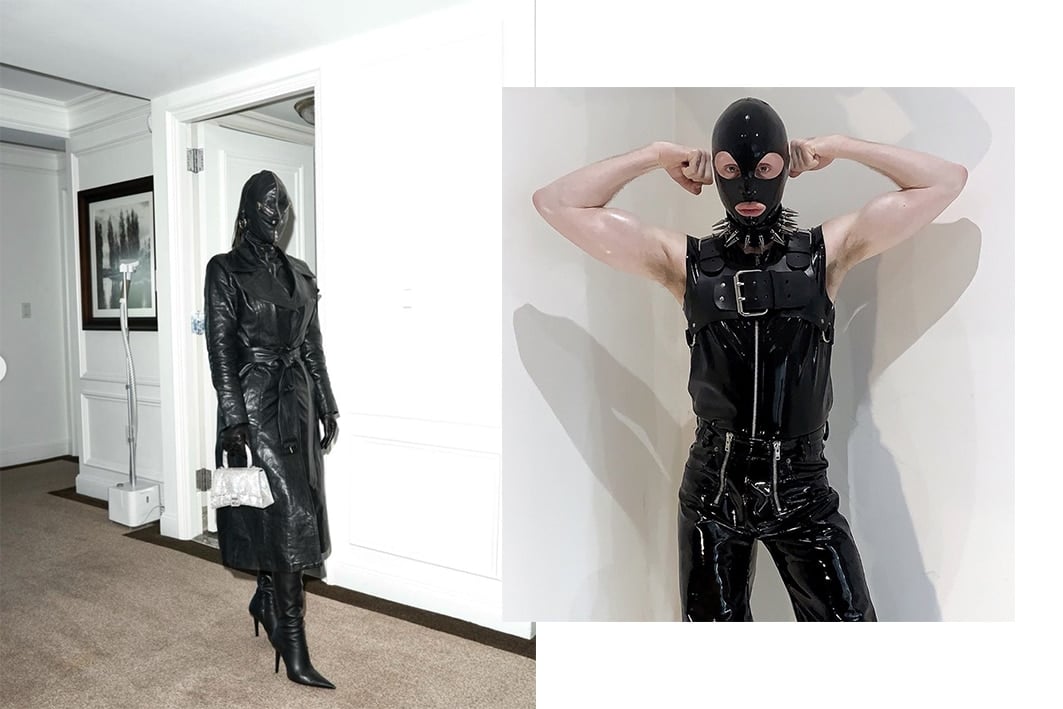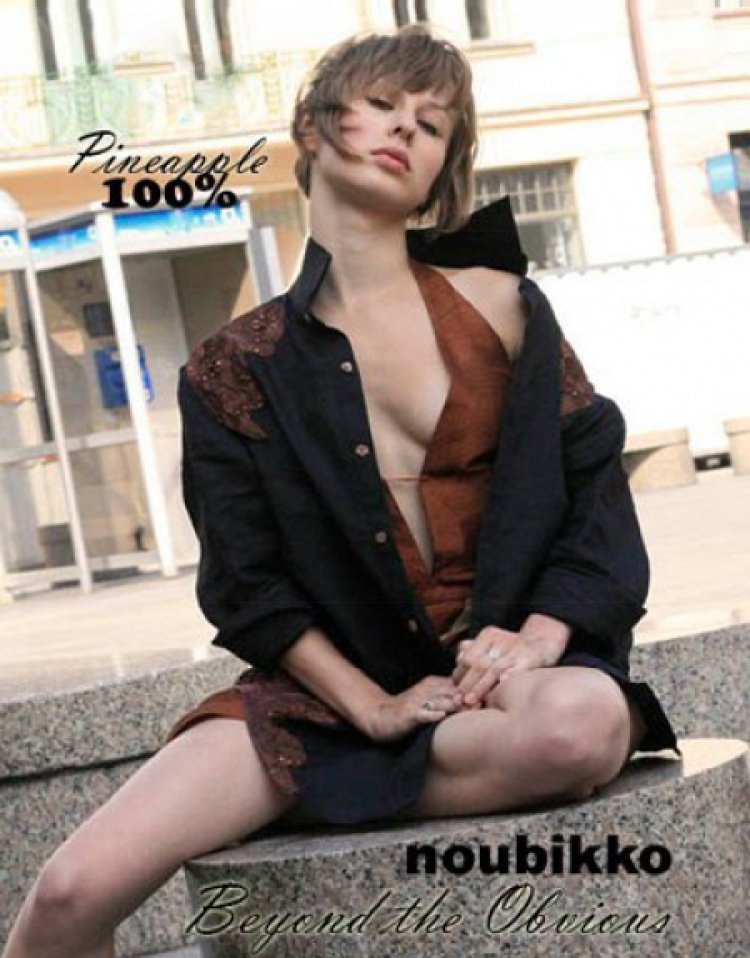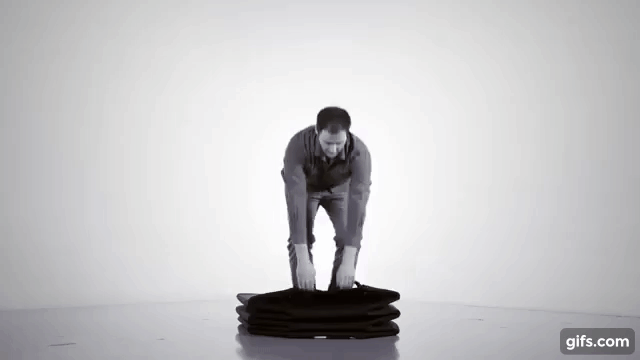There is another conversation to be had about the rise of fetish fashion, and it starts with its cultural history
Amongst the crystal encrusted naked dresses that appear on the carpet year after year, a more subversive theme was taking shape, and that shape, was Kim Kardashian in a leather Vetements gimp mask. The post There is another conversation to be had about the rise of fetish fashion, and it starts with its cultural history appeared first on RUSSH.

This year, as the world prepared for its first in-person awards season since COVID-19 saw everything get postponed, there was a reoccurring theme on the red carpet. Amongst the crystal encrusted naked dresses that appear on the carpet year after year, a more subversive theme was taking shape, and that shape, was Kim Kardashian in a leather Vetements gimp mask.
View this post on Instagram
A post shared by Kim Kardashian West (@kimkardashian)
Fetish wear and fetish fashion – the umbrella term for garments most frequently used in kink communities like leather, bondage, and latex – creeps into the peripherals of main stream fashion every few years, pedalled by celebrities who are hoping to be included in the optics of a sex-positive movement that has its roots in both the LGBTQI+ and sex work community. This season, it was first Kim Kardashian in a full Vetements look in New York by Demna Gvasalia, who has been working with kink-inspired silhouettes for much of his career as a queer designer; then, it was Madonna at the VMA’s, who has always been famed for taking cues from the LGBTQI+ community in her work and personal style. Gossip Girl star Evan Mock followed at the Met Gala, in a Thom Browne gimp mask. Miley Cyrus has done it in previous years, Timothée Chalamet has done it, and designers like Vivienne Westwood, Alexander McQueen and Martin Margiela have been crafting hoods, chokers, harnesses, and rubber for the runway for decades. But when mainstream fashion adopts culturally significant optics from those whose identities sit in the marginal rings of society in the hope to capitalise on a subversive trend, what does it mean for the communities who pioneered the kink movement in the first place?
View this post on Instagram
Kurt Johnson, a stylist who has been working with kink and fetish-inspired fashion for almost a decade, first became familiar with the subculture through Robert Mapplethorpe’s work, which in turn served as a crucial moment on his journey with his sexual identity. To this day, it is still something that his identity is heavily linked to, and the rise of fetish fashion in mainstream and celebrity culture, is a concept he is still at odds with. “My queerness is so linked to my ties with the kink community, and all of that is an extension of who I am and my self expression as a queer person.” Johnson tells me over the phone. “So seeing people think of it as a fashion statement or trend and a passing fad that’s gonna come in and out, it does feel a little bit contrived.” He says.
“But, it’s also nice to see people embracing it rather than labelling people who are into kink as freaks. It’s nice to see some people be a little more receptive to it, but it does feel like it’s a bit of a costume for them or a Halloween gimmick rather than an extension of who they are and their personal identity.” He notes.
View this post on Instagram
A post shared by KIM PETRAS (@kimpetras)
A brief history of leather subculture
After all, for those who are part of the kink community, identity in its many forms is paramount, especially when it is so tightly bound to gay culture. A movement that arose post World War II, when veterans returned to America and congregated in major cities, they used the leather from their uniforms to express themselves in subcultures of society. Sociologist Meredith G. F. Worthen, author of Sexual Deviance and Society, writes that it was partially down to the fact that these veterans experienced difficulty assimilating back into mainstream society, after their time serving had allowed them to explore homosexual desire for the first time.
“It all kind of started with the gays, so it is a very important part of queer history. Leather subculture became a very important part in the gay male scene, so it’s one in the same narrative” Johnson says, which raises the question of the way kink continuously emerges into the daylight after economic downturns or major events, such as wars and, most recently, the pandemic.
Kink for COVID-19
“The re-emergence of fetish fashion is in part a reaction to lockdown,” Professor Andrew Groves who curated Undercover, an exhibition which looked back at pandemic mask wearing in public spaces, told The Gaurdian. “For the last 18 months, we’ve all been in a strange BDSM relationship with the government,” he says, “which has controlled our bodies, forcing us to wear masks and told us who we can kiss or touch. Adopting fetish clothing as fashion can be interpreted as a desire to switch the relationship, take back control and show them who is really in charge.”
“I think that people being forced to wear a mask all the time has definitely pushed people into looking for more creative ways to do so” Johnson says, noting that when it comes to Kim Kardashian’s participation in wearing a gimp mask, it could partially be seen as a statement on how intrinsically tied our faces are to our overarching identity in the digital age. “There are so many things going on culturally that could push people to conceal their identity, and move a little more anonymously” He says, acknowledging that at the crux of it, this is the central idea of the kink community at large.
“Losing that person and seeing them as just an object is such a big part of what people practice when they put on latex and put on a gimp mask. It’s about becoming anonymous and becoming another person to who you are without the mask.”
With all of this in mind, is it possible to separate a subculture that is so embedded into the history of queer folks and sex workers alike, with a trend that is considered edgy? When all is said and done and Kim Kardashian ships her gimp mask back to Demna, a fetishist in his own right, will progress have been made towards the destigmatisation of fetishism and the kink community, and those who have held it close to their identities for years on the fringes of society? Or will it be discarded as a trendy blip in the fashion radar that coined terms like “bondage-chic” in a thinly veiled attempt to dilute its true roots?
For Johnson, the progress lies in the conversation. “we just need an acknowledgement that this crazy fad that people are jumping on now, originated from somewhere for a particular fucking reason. It came from sex workers and queer people who have continually been ostracised and segregated from society. I think if cisgendered heterosexual people are going to put a mask on because they think it’s fun and they think it’s trendy, just having some awareness of the history would just hopefully change a few minds.” He says. “The community as a whole continues to face oppression and continues to face hate still to this day, and sex workers very much so as well, so I just hope that conversation can be started so a few more people are less homophobic, a few more people are less transphobic, and a few more people are less whorephobic. That would be the ideal.” He says.
“Unless you’re pro sex work and pro queer, take the mask off.”
The post There is another conversation to be had about the rise of fetish fashion, and it starts with its cultural history appeared first on RUSSH.
















